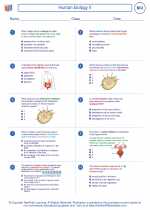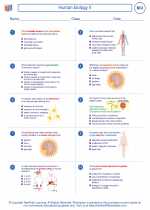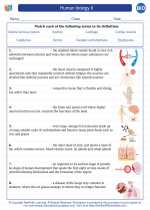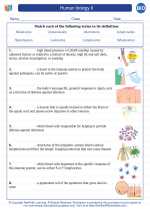Microorganisms
Microorganisms, or microbes, are tiny living organisms that are too small to be seen with the naked eye. They include bacteria, viruses, fungi, and protozoa. Despite their small size, microorganisms play a crucial role in various ecological and biological processes.
Types of Microorganisms
Microorganisms can be classified into several groups based on their characteristics:
- Bacteria: Single-celled organisms that can be found in various environments. They can be beneficial or harmful to humans and the environment.
- Viruses: Submicroscopic infectious agents that can only replicate inside the cells of living organisms. They can cause diseases in humans, animals, and plants.
- Fungi: Eukaryotic organisms that can be unicellular or multicellular. They play a crucial role in decomposition and nutrient cycling.
- Protozoa: Single-celled organisms that are often motile and can be found in diverse habitats, including water and soil. Some protozoa are parasitic and can cause diseases.
Roles of Microorganisms
Microorganisms have various important roles in the environment and human life:
- Decomposition: Microorganisms break down dead organic matter, releasing nutrients back into the environment.
- Nutrient Cycling: They play a key role in recycling nutrients such as carbon, nitrogen, and phosphorus in ecosystems.
- Food Production: Microorganisms are used in processes such as fermentation to produce foods like yogurt, cheese, and bread.
- Bioremediation: Some microorganisms can degrade pollutants and contaminants, contributing to environmental cleanup.
- Disease: Certain microorganisms can cause infectious diseases in humans, animals, and plants.
Study Guide
When studying microorganisms, it's important to understand their diversity, structure, and functions. Here are some key topics to focus on:
- Classification of microorganisms into different groups.
- Structural features of bacteria, viruses, fungi, and protozoa.
- Role of microorganisms in nutrient cycling and ecosystem dynamics.
- Applications of microorganisms in biotechnology, medicine, and industry.
- Impact of microorganisms on human health and strategies for disease prevention.
Additionally, it's helpful to explore specific examples of beneficial and harmful microorganisms, as well as their significance in various fields such as agriculture, biotechnology, and environmental science.
.◂Biology Worksheets and Study Guides High School. Human biology II

 Worksheet/Answer key
Worksheet/Answer key
 Worksheet/Answer key
Worksheet/Answer key
 Vocabulary/Answer key
Vocabulary/Answer key
 Vocabulary/Answer key
Vocabulary/Answer key
 Vocabulary/Answer key
Vocabulary/Answer key
 Vocabulary/Answer key
Vocabulary/Answer key
 Vocabulary/Answer key
Vocabulary/Answer key
 Vocabulary/Answer key
Vocabulary/Answer key
 Vocabulary/Answer key
Vocabulary/Answer key
